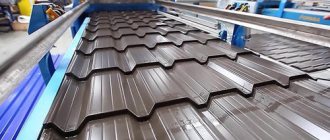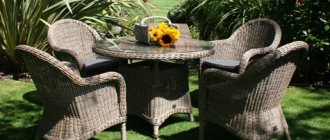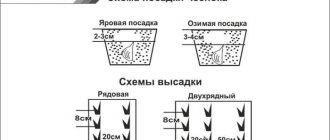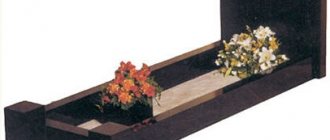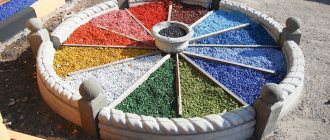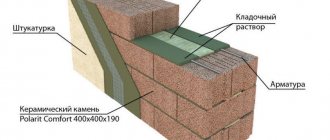Relevance
Artificial stone is a fairly common material in the modern construction market. It is environmentally friendly, fire-resistant, has high heat and sound insulation qualities. It has an excellent aesthetic appearance and makes it possible to realize many design ideas. Unlike natural materials, it is produced in a wide range of colors, is characterized by expressiveness and harmonizes with any interior and style.
High productivity, low cost of raw materials, ease of organization and lack of energy costs make this business attractive and relevant.
Basic properties, material classification
Decorative stone comes in two types - for interior and exterior use. For external stone, cement, sand and various pigments, dyes and other additives are used. The basis of the inner stone is gypsum. It is mixed with white cement, pozzolanic additions, oxide pigments, etc.
This connection produces a fairly strong material that:
- resistant to temperature changes;
- retains color when exposed to ultraviolet rays;
- hygienic;
- has low weight compared to natural stone;
- environmentally friendly;
- durable.
Financial plan
To calculate the payback and profitability of the project, consider the materials for artificial stone per 1 square meter:
- Portland cement – 35 rubles per 6 kilograms;
- sand – 15 rubles per 9 kilograms;
- plasticizer – 3 rubles per 60 grams;
- pigments, dyes – 10 rubles per 150 grams;
- depreciation charges - 5 rubles;
- taxes – 5 rubles;
- electricity payment - 20 kopecks.
As can be seen from the calculations, it will take about 73.20 rubles to produce 1 square meter. Today, the cost of finished material on the construction market is 650-1000 rubles.
You can maximize your income by adding transportation and stowage to your services. After developing and expanding the product line and increasing production speed, you can reach a new level of business. In this case, the costs will be:
- purchase of equipment:
- vibrating table – 30-70 thousand rubles;
- drill with mixer attachment – 5 thousand rubles;
- concrete mixer – 8-20 thousand rubles;
- work tables (2 pcs.) – 10-15 thousand rubles;
- vibrating sieve - 9-15 thousand rubles;
- inventory – 7-15 thousand rubles;
- rent – 20 thousand rubles;
- registration – 1 thousand rubles;
- drying racks – 10 thousand rubles.
To organize an enterprise you need 100-170 thousand rubles.
The information provided in this article is only a brief introduction to the essence of the business. If you decide to move on to implementation, then you need to download a professional business plan for the production of artificial stone with detailed calculations:
If such a company produces and sells 100 m² (the minimum threshold is taken), the monthly profit will be 57,680 rubles. (650-73.20)x100.
The payback period will be 2-3 months. Video - Making Venetian stone (brick):
How to make a pouring mold
It is advisable to buy ready-made molds in specialized stores, but if for some reason you cannot purchase a ready-made silicone mold, then you can make it yourself.
Stone molds
Silicone forms
Prepare your tool in advance
Prices for building levels
Construction levels
For manufacturing, you need to prepare even slats with smooth surfaces; for example, we took sections of sandwich panels, they are even, smooth, not afraid of moisture, and silicone does not stick to them. You will need quite a lot of two-component silicone with a hardener. The quantity depends on the size of the molds; you can buy it in online stores or large construction supermarkets. Sold in containers larger than one liter. Forms can be made to match commercially available facing materials or you can choose the topography of the front surface yourself. We will indicate all other accessories and tools along the step-by-step instructions. The technology for using ready-made stones or self-made templates is not much different; we will focus on the second option. It allows you to create any reliefs on the surface.
Step 1. Cut out stone patterns from the planks. The thickness is 8–10 mm, the length and width are at your discretion. Standard dimensions are 20x5 cm. But this is not necessary, it all depends on what kind of stele you plan to decorate the walls with and where exactly to place the artificial stone. There is no need to make it thicker; it is strong enough, and due to its small thickness, material is saved and weight is reduced.
Step 2. Glue corresponding pieces of embossed wallpaper or other elements to the surface of the templates to create a hill. If it’s difficult for you to come up with something on your own, then buy several ready-made artificial stones in the store and fill the mold using them.
Step 3. Use self-tapping screws to strengthen the walls of the box for filling the mold; if there are gaps, cover them with liquid glue or seal them with single-sided tape. The dimensions of the box are arbitrary and selected taking into account the workpieces.
Formwork assembly
Sealing joints
The distance between individual workpieces is 5 mm. Before installation, check the gaps, they should all be exactly the same. We do not recommend making a mold for halves. Firstly, their required quantity is difficult to predict, and it is not recommended to use extra halves instead of whole ones. Secondly, it is much easier to cut a piece of the required length with a grinder during installation.
The photo shows a fastened box and stones placed in it for the template.
Master model is ready to work
Step 4. Draw a horizontal line along the inner perimeter of the walls; it should be approximately 1–1.5 cm above the surface of the templates. This parameter is optimal for saving polyurethane and is sufficient to maintain shape stability.
Step 5. Carefully coat all surfaces that will come into contact with the polyurethane with an intermediate layer.
Lubricate the surfaces with Vaseline or grease
You can take petroleum jelly or grease, buy special liquids in stores, etc. We recommend dissolving laundry soap in water and spraying the surfaces with a spray bottle. Simple, cheap, fast and reliable. The same solution can also be used during the manufacture of artificial stones. Soap has another undeniable advantage - it does not leave marks on facial surfaces and, if necessary, can be easily washed off with ordinary water.
Step 6. Prepare the polyurethane according to the instructions.
Polyurethane
Mix the ingredients very thoroughly; it is better to use an electric mixer. It is difficult to ensure uniform mixing manually, and the quality of the polyurethane largely depends on this. It is better to do the filling in two stages; prepare the material in this way.
Preparing the mixture
Step 7. Align the box strictly horizontally, use a level for this.
Step 8: Slowly and very carefully pour the polyurethane into the drawer.
Pouring and spreading the mixture
Pouring the solution into the mold
Pouring polyurethane
Keep track of how much material is needed, this will give you the opportunity to navigate the size of the second portion. When filling, pay special attention to the space between individual templates, do not allow gaps. After the first stage of pouring polyurethane is completed, lightly tap the edges of the box with a rubber mallet or other non-metallic object to remove air.
Bubbles can be removed with a hair dryer
Step 9. Prepare the second part of polyurethane and pour it into the box. Pay attention to the horizontal line along the perimeter of the walls. If there is a little polymer left, pour it all out, you will still have to throw it away, and the thickened bottom will not harm during the actual production of stones.
Polyurethane should cure in approximately 4-8 hours, but the exact time depends on the brand.
Poured form
Practical advice. To prepare large quantities of polyurethane, you need to use accurate electronic scales. The proportions of the components must be controlled down to the gram; the physical characteristics of the finished form depend on this.
If possible, make several forms in the same way. After each excavation has hardened, all surfaces should be covered with an intermediate layer. The forms are ready, you can start making artificial stone.
How to remove the mold
After the polyurethane has hardened, disassemble the walls of the box and begin removing the mold.
Dismantling the formwork
Disassemble the walls
If you carefully followed our recommendations, there will be no problems. The form is removed with great effort - try cutting off the polyurethane a little in the gluing areas with a sharp mounting knife. If you find shells and mechanical damage to the front surfaces, do not be discouraged. Problems can be easily fixed with silicone; buy one tube and repair any holes or damage.
Mold for making stones
Homemade form
Documentation
Making artificial stone with your own hands at home is not subject to certification or licensing. At the start, you need to register as an individual entrepreneur. This process will take 5 business days. The procedure costs 800 rubles. Then you should choose a tax form and get to work.
If you are planning large-scale production and intend to hire workers, it is better to register a limited liability company. The procedure requires longer registration and a larger starting amount, but in this way the entrepreneur will be responsible for the business only with the invested funds.
It is also necessary to prepare a package of technical and permitting documentation (conclusion from the SES, permission from the fire inspectorate, etc.). Video - Artificial decorative stone made of cement:
Organization of the workroom
Before starting the production of decorative stone, you should properly plan the upcoming work and think through options for marketing the products.
The production of gypsum tiles at home and other facing stones in small quantities can be done in a small room - a personal garage or barn. If you want to organize an enterprise on a larger scale, you need to select a building of a larger size and taking into account certain requirements.
- Renting premises. It is more profitable to rent a work space on the outskirts of the city - it is easier to find a spacious and inexpensive building here. In addition, you will not have to deliver products from the center to customers.
- Water. The manufacture of artificial building material requires significant use of water. Therefore, you should rent a room near water wells or a water treatment plant. In such conditions, process water will be much cheaper when purchased, and its delivery to the place of stone production will cost minimally.
- Heating. Heating is not required for the warehouse space. If the finished product warehouse is located outside, it is necessary to make a rain shelter over it. The temperature of the main room reserved for the production of decorative stone must be positive so that the water necessary for work does not freeze. In a place specially designated for drying the stone, you must constantly maintain 30 degrees of heat and dry air. Rooms for auxiliary workers are also heated. We must not forget about ventilation in the room.
- Wiring. An important point is proper electrical wiring. When producing stone, a lot of electricity is consumed. Therefore, electrical wires must be in perfect condition and of the required size so that equipment breakdown or fire does not occur in this enterprise.
Faulty electrical wiring can lead to irreversible consequences
The production of stone in large quantities requires the recruitment of working personnel - at least two people: a technologist and an auxiliary worker.
Before starting a business, it should be registered with the relevant authorities.
Premises requirements
The production of decorative facing stone from gypsum as a business can be started by preparing a small utility room or extension. As you increase your momentum, think about renting an area of 50-80 m². There are a number of requirements for the premises:
- heating - the temperature should not fall below 15°C;
- good ventilation;
- connection to the electrical network for equipment operation;
- there must be a canopy in the open area for the warehouse;
- convenient transport access routes.
Video - Production of decorative stone (mix, pouring, drying):
Video - Painting stone:
Do-it-yourself mold making
Polyurethane molds are purchased because a continuous production cycle will require 50 or more molds of the same type. But for exclusive elements you can make them yourself:
- a master model is created from plaster;
- then a box is made from sheet metal or wood according to the dimensions of the model;
- the model is fixed in a box and filled with Por-A-Molda polyurethane compound;
- After a day, the frozen form with the imprint of the master model hardens. It is removed and used to cast stone.
Over time, the surface of the molds wears out, and the sets are updated by purchasing or making new ones.
Equipment
The set of equipment and inventory depends on the scale. For small volumes you will need a vat, a drill with a mixer attachment, a trowel, and molds that you can make yourself.
For large scales, a set of equipment for the production of artificial stone is as follows:
- a forming vibrating table or vibrating conveyor designed for proper distribution and removal of bubbles;
- vibrating sieve for preparing bulk mixtures;
- mortar or concrete mixer;
- forms;
- scales;
- transport trolleys;
- drying chambers.
Video - How to make your own silicone mold for casting from plaster:
Also take care of your inventory:
- cars;
- shovels;
- buckets;
- brushes;
- measuring spoons;
- spatulas;
- packaging material;
- sandpaper;
- pallets.
Artificial stone production technology
The artificial stone production technology itself consists of the following processes:
- Preparing the potting mixture. To do this, you need to mix with water one part of cement and three parts of sand, sifted on a vibrating sieve in a concrete mixer. The resulting mass has the consistency of thick sour cream.
- Add dye . In some industries, to reduce the cost of finished products, the dye is not added to the total mass of the mixture, but is mixed in a separate batch.
- The resulting mixture is poured into molds for the production of artificial stone, up to half their volume. In the case of two-component production, where one part of the mixture is not colored, and dye is added to the other, the colored mixture is poured first.
- When the mold is half filled, shake it on a vibrating table to remove air bubbles from the mixture and compact it.
How are double-glazed windows made? What is needed to start your own business? The material on equipment for the production of double-glazed windows provides answers to these and other questions.
What technologies are used for waste disposal? Among others, recycling of plastic bottles occupies an important place. On this page, watch a video about recycling plastic bottles.
Where and how are dumplings made? To produce large quantities of dumplings, lines of necessary equipment are usually assembled. From the material you can learn how a machine for making dumplings works.
- The next process is reinforcement . On top of the first poured layer, a mesh made of metal is placed in the molds. It serves to give strength to the finished product.
- The second layer of the mixture is poured. In the case of two-component production, the second layer is an uncolored solution.
- The completed forms are shaken again on the vibrating table. After completing the procedure, it is recommended to apply stripes onto the poured mixture using a shaped spatula. This will give the stone additional adhesion to adhesive solutions during installation.
- The forms are moved to drying. The solution hardening time is 12 hours . After this, the finished stone is removed from the molds and kept in a warehouse for a couple of weeks for the stone to gain strength and final drying.
As you can see, the production of artificial stone from concrete is a rather labor-intensive process, but not complicated.
If you decide to produce stone from a cement-sand mixture, you should take care to have the required number of ready-made molds in production, since after pouring, the molds will not be available for reuse for 12 hours while the solution hardens in them.
Stone made using this technology is suitable for interior and exterior cladding.
Also, artificial stone is made from gypsum. The production technology is not very different from the production of stone from concrete, but it has several differences.
Thus, in the production of gypsum stone, some manufacturers use not steel, but polyurethane, fiberglass or propylene mesh as a reinforcing layer.
It is worth noting the fact that the production of artificial stone from gypsum requires a smaller number of free forms, since the hardening time of the gypsum mixture is several tens of minutes.
After the hardening time has passed, the finished stone can be removed from the mold and reused.
Stone made using this technology is only suitable for interior cladding of buildings.
Staff
Even if you don’t plan to hire workers at the start, and you haven’t encountered the peculiarities and pitfalls of the production process before, consult a technologist. For a medium-sized business organization, a technologist must work in the main staff. His task is to develop recipes, expand the product range, select colors, and quality control. He must know what kind of gypsum is used and what the ratio of all components should be. In small organizations, he is responsible for logistics and working with customers. To produce 50-100 m² of artificial stone per month, you need to hire two workers.
Hired employees
You already know what artificial stone is made from, but labor is needed to carry out the continuous production process. A qualified technician will be enough to monitor the entire process and monitor the serviceability of the equipment, and one handyman responsible for preparing the mixture. If you plan to produce products in large volumes, then in this case you cannot do without a technologist. His responsibilities include the development of a unique recipe, as well as control of production and quality of the finished product.
Sales
Finding buyers is an important factor for a quick return on investment for a project. Therefore, it is worth connecting all possible ways to establish sales channels:
- personal meetings with owners of retail outlets, repair and finishing companies;
- participation in construction exhibitions and presentations;
- placement of information in local media;
- creation of a business card website;
- promotion on social networks;
- outdoor advertising (banners, signs, posters);
- dissemination of information (distribution of leaflets, business cards, brochures) with product descriptions.
At home
You can even organize a mini-workshop in your garage, shed or outbuilding. To begin with, you can limit yourself to a simple tool (drill, shovel, trowel, mixing container) and purchase raw materials. An important nuance is the forms. Since they are expensive, you can make them yourself.
To make a mold for artificial stone with your own hands, you need to lay out a set of tile models on a flat surface and surround it with a side and cover it with polyethylene. The side should be 1-2 centimeters higher than the model. Coat the inside with solid oil or shahthol. Install the molding shield horizontally and fill it with silicone (it is more economical to use the acidic type). After this, the surface must be smoothed with a spatula. The form will dry faster if the room is ventilated. The drying rate is approximately 2 millimeters per day. Let the mold dry until completely dry.
Production process
Let's look at what it consists of? The technology for making artificial stone is very simple, so anyone can master it in a short period of time. First you will need to make a special solution, and also add natural dyes, hardeners and plasticizers to it. In most cases, the method of vibrocasting or vibrocompression is used. The first requires the use of expensive equipment, so it makes sense to use it only in industrial production conditions. It allows you to produce tiles of various shapes and sizes, thanks to which the product range will be quite wide. The second option allows you to achieve low costs and also does not require hiring qualified personnel. Everything happens completely automatically, so in the first stages you can work independently.
Separately, it is worth noting the technology that involves the use of gypsum mortar and polyurethane mold for artificial stone. It is considered one of the most profitable, since raw materials are low in cost, and finished products are sold at high prices. One bag is enough to make tiles that are enough to finish ten square meters of work surface. In addition, the technological process is very simple and does not require much time. You just need to pour the dry mixture into a special container and add water to it in a given proportion, after which the mass itself will spread into the molds. This does not even require any specialized, high-cost equipment. The mass will completely harden in just 15 minutes, and it can be removed from the containers.


